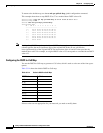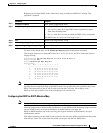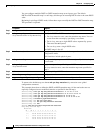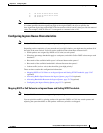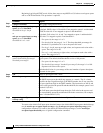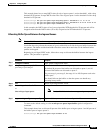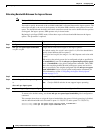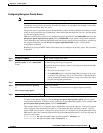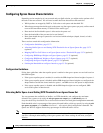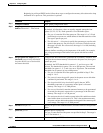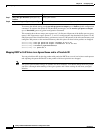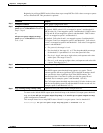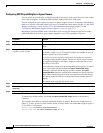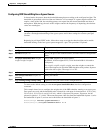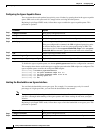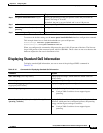
33-72
Catalyst 2960 and 2960-S Switch Software Configuration Guide
OL-8603-09
Chapter 33 Configuring QoS
Configuring Standard QoS
Configuring Egress Queue Characteristics
Depending on the complexity of your network and your QoS solution, you might need to perform all of
the tasks in the next sections. You will need to make decisions about these characteristics:
• Which packets are mapped by DSCP or CoS value to each queue and threshold ID?
• What drop percentage thresholds apply to the queue-set (four egress queues per port), and how much
reserved and maximum memory is needed for the traffic type?
• How much of the fixed buffer space is allocated to the queue-set?
• Does the bandwidth of the port need to be rate limited?
• How often should the egress queues be serviced and which technique (shaped, shared, or both)
should be used?
These sections contain this configuration information:
• Configuration Guidelines, page 33-72
• Allocating Buffer Space to and Setting WTD Thresholds for an Egress Queue-Set, page 33-72
(optional)
• Mapping DSCP or CoS Values to an Egress Queue and to a Threshold ID, page 33-74 (optional)
• Configuring SRR Shaped Weights on Egress Queues, page 33-76 (optional)
• Configuring SRR Shared Weights on Egress Queues, page 33-77 (optional)
• Configuring the Egress Expedite Queue, page 33-78 (optional)
• Limiting the Bandwidth on an Egress Interface, page 33-78 (optional)
Configuration Guidelines
Follow these guidelines when the expedite queue is enabled or the egress queues are serviced based on
their SRR weights:
• If the egress expedite queue is enabled, it overrides the SRR shaped and shared weights for queue 1.
• If the egress expedite queue is disabled and the SRR shaped and shared weights are configured, the
shaped mode overrides the shared mode for queue 1, and SRR services this queue in shaped mode.
• If the egress expedite queue is disabled and the SRR shaped weights are not configured, SRR
services this queue in shared mode.
Allocating Buffer Space to and Setting WTD Thresholds for an Egress Queue-Set
You can guarantee the availability of buffers, set WTD thresholds, and configure the maximum
allocation for a queue-set by using the mls qos queue-set output qset-id threshold queue-id
drop-threshold1 drop-threshold2 reserved-threshold maximum-threshold global configuration commands.
Each threshold value is a percentage of the queues allocated buffers, which you specify by using the mls
qos queue-set output qset-id buffers allocation1 ... allocation4 global configuration command. The
queues use WTD to support distinct drop percentages for different traffic classes.
Note The egress queue default settings are suitable for most situations. You should change them only when
you have a thorough understanding of the egress queues and if these settings do not meet your QoS
solution.



